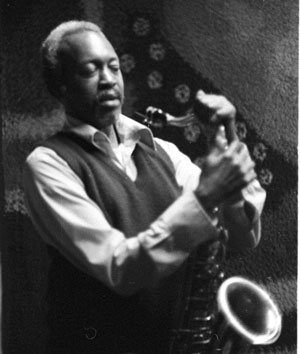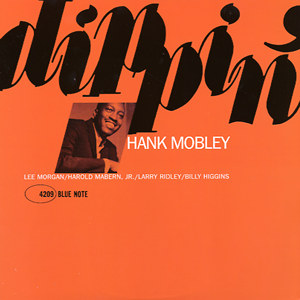Vamp – Hank Mobley
Though not technically based on a vamp, this minor blues variation is full of rhythmic patterns. We have detailed rhythm section parts and a concert quintet score, as well as a transcription of Hank Mobley’s solo.
- Recording: Hank Mobley - Dippin'
- Recorded on: June 18, 1965
- Label: Blue Note (BLP 4209)
- Concert Key: C minor
- Vocal Range: , to
- Style: Swing (medium up)
- Trumpet - Lee Morgan
- Tenor Sax - Hank Mobley
- Piano - Harold Mabern
- Bass - Larry Ridley
- Drums - Billy Higgins
Video
- Description
- Historical Notes
- Solos
- Piano Corner
- Bass Corner
- Drum Corner
- Guitar Corner
- Inside & Beyond
- Minus You
The Vamp is all rhythm. Though this song has a definite form, not truly built on a vamp, the entire head consists of repeating rhythm patterns through the chord progression. The melody is very simple: for the first 16 measures there is only one note per measure on the “and” of beat 2, “bouncing” off the bass downbeat. This song is essentially a 24-measure blues, but with a few alterations in the basic chord structure: the IV chord is replaced with A♭7, the ♭VI, and the last eight measures stay on G7♭5 resulting in a cyclical form. The head changes add stepwise passing chords through the first 16 measures. The rhythm section plays “broken time” in the last eight measures of the solo chorus. There is an eight-measure intro, setting up the rhythm section pattern for the head. The ending vamps and fades out on the pattern from the last eight measures.
A Concert Score and parts are available for the quintet arrangement. The detailed rhythm section parts reflect the recording. Harold Mabern’s piano voicings are in quite a low register; both staves of the piano part are written in bass clef. The horns are harmonized throughout the head; we feel this really is a quintet composition though it could conceivably work with only the first horn part.
A transcription is available of Hank Mobley’s solo; click on Solos for more details.
A Concert Score and parts are available for the quintet arrangement. The detailed rhythm section parts reflect the recording. Harold Mabern’s piano voicings are in quite a low register; both staves of the piano part are written in bass clef. The horns are harmonized throughout the head; we feel this really is a quintet composition though it could conceivably work with only the first horn part.
A transcription is available of Hank Mobley’s solo; click on Solos for more details.
In 1966, Hank Mobley used a similar form and rhythmic structure for his song H.M. On F.M. (coming soon to jazzleadsheets.com) which he recorded with Elvin Jones; the solo changes are the same as in The Vamp. For more Mobley songs based on rhythm section patterns check out Third Season and Two And One.
The day before the “Dippin'" session, Billy Higgins played on a Sonny Rollins concert at the Museum Of Modern Art in New York, recorded by Rudy Van Gelder and released as “There Will Never Be Another You.” A week later, Higgins, Lee Morgan and Harold Mabern were back at Van Gelder’s Englewood Cliffs studio for the first of two sessions for Morgan’s album “The Gigolo.”
The day before the “Dippin'" session, Billy Higgins played on a Sonny Rollins concert at the Museum Of Modern Art in New York, recorded by Rudy Van Gelder and released as “There Will Never Be Another You.” A week later, Higgins, Lee Morgan and Harold Mabern were back at Van Gelder’s Englewood Cliffs studio for the first of two sessions for Morgan’s album “The Gigolo.”
[clip] Hank Mobley’s six choruses are a classic example of his later style. In most of these choruses he begins with simple, rhythmic ideas and expands into longer lines by the end. Check out his vocabulary over the last eight measures (concert G7♭5 throughout). He often plays whole-tone scale patterns here, but in the fourth chorus he outlines a G diminished chord instead. In the fifth chorus he uses G “half-whole” diminished scale to approach a descending D diminished chord (the other diminished chord in this scale).
Related Songs
Email Send Vamp to a friend
Send this page to a friend via email. Add your name or email in the first field. In the second, add one or more email addresses, separated by a comma.

Hank Mobley
July 7, 1930 – May 30, 1986
Hank Mobley is one of the most acclaimed tenor saxophonists in modern jazz history. He is recognized by musicians and critics alike as one of the most important and eloquent jazz instrumentalists of all time. He recorded well over 100 of his own original compositions and left an indelible mark on the post-bop jazz scene. Read more...
There was a problem.
...

